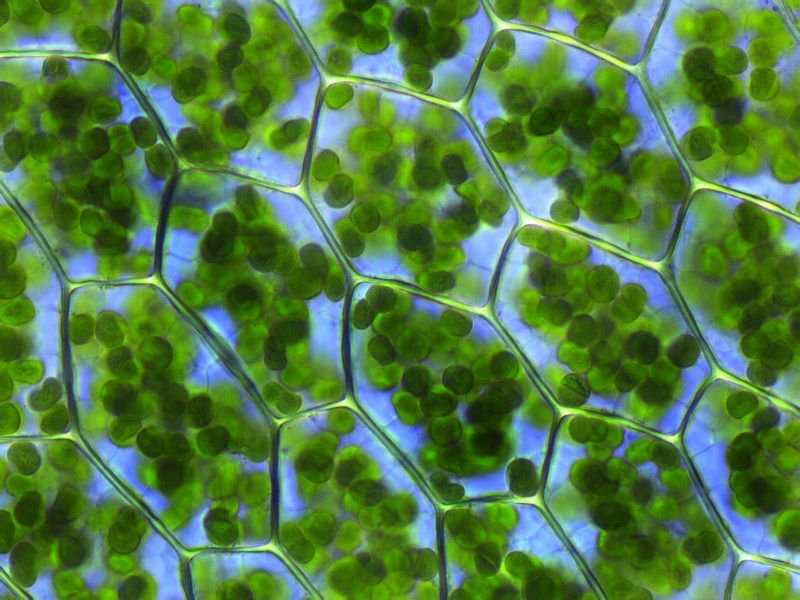Watch Leaves Change Color in a Matter of Seconds
A new time-lapse video of over 6,000 leaf photos reveals the biology behind fall foliage
:focal(990x523:991x524)/https://tf-cmsv2-smithsonianmag-media.s3.amazonaws.com/filer/0d/83/0d83d896-311f-44c5-9ab5-ee1fe073c086/screen-shot-2019-08-14-at-122105-pm.jpg)
Every fall, the leaves of deciduous trees undergo a dramatic color change before forfeiting their newfound hues, fading to brown and dying. The process can take weeks, but Owen Reiser, a mathematics and biology student at Southern Illinois University Edwardsville, wanted to see the leaves change in a matter of seconds. “I was taking a field biology class and we were learning about deciduous trees,” he says. “I’ve been getting into wildlife photography and time-lapse for a while, and I couldn’t find a time-lapse of leaves changing color, so I just went for it.”
Over the course of six weeks, Reiser took more than 6,000 close-up photographs of leaves in his homemade time-lapse studio, which includes a macro lens and a camera he purchased on eBay, a $10 LED light and a battery that allows the camera to run continuously. “It’s [basically] a cardboard box and a bunch of duct tape, but it gets the job done,” he says.
Reiser gathered leaves from eight different deciduous trees, species such as sassafras and sugar maple that shed their foliage annually, and took a photograph of each one every 30 to 60 seconds for up to three days. By stitching together thousands of images into a single video, he revealed a scene of changing leaves that’s far more alive than a typical autumn snapshot. In the time-lapse video, color seeps through each leaf like dye spreading through fabric, revealing the dynamic inner workings of the plants as they transform.
David Lee, professor emeritus in biological sciences at Florida International University and author of Nature’s Palette: The Science of Plant Color, says he has never seen a video like Reiser’s before. “The color even on an individual leaf varies dramatically, and this shows that change over time.”
Despite the popularity of fall foliage, the science behind the changing leaves isn’t widely known. “Every fall, people write about color change, and typically the articles are full of all kinds of mistakes,” Lee says. One of the biggest misconceptions is that red and yellow leaves change in the same way, when they actually undergo completely different processes.
The yellow leaves of plants like witch hazel follow a traditional textbook explanation for color change: The breakdown of green photosynthetic pigments called chlorophylls exposes the yellow pigments, or carotenoids, hiding underneath. (Carotenoids are the same type of pigment that gives pumpkins and carrots their distinct hues.) As the leaves continue to waste away, they produce tannins and turn brown.

On the other hand, most red tones, like those in red oaks, come from a pigment called anthocyanin that’s produced as the leaf dies. “People argue that the red color is [also] an unmasking from the breakdown of chlorophyll, and that’s simply wrong,” Lee says. “The red color is actually made when the chlorophyll is beginning to break down—there’s a synthesis of those pigments, so it’s quite a different thing.”
Although scientists know how red pigments are created, they’re still not sure why. According to Lee, there are two dominant hypotheses. Evolutionary biologist William Hamilton suggested that color is used to protect plants from herbivory, since red hues might trick insects into thinking that a leaf is toxic or unhealthy, discouraging bugs from feeding on it or laying their eggs there.
However, the dominant belief popularized by horticulturist Bill Hoch is that red pigments offer photo-protection when the leaf is vulnerable, especially in bright light and low temperatures when plants don’t photosynthesize as efficiently. Anthocyanins help shield the leaf by absorbing excess light at wavelengths that aren’t used for photosynthesis, like the green part of the visible spectrum. They also act as antioxidants, protecting the leaf from toxic byproducts that are made when chlorophyll breaks down during aging.
The synthesis of anthocyanins might also explain why the rapidly expanding blotches of color in Reiser’s time-lapse aren’t uniform, since temperature and light exposure can vary drastically over a leaf’s surface, possibly impacting local production of the pigment.
But why would a plant go through the evolutionary trouble of protecting a leaf that’s destined to die? “The advantage to the plant is that the leaves that are breaking down can more efficiently remove nitrogen from the proteins that are breaking down, and transport the nitrogen back into the plant, either in the big limbs or even in the root system,” Lee says. Nitrogen is an essential nutrient for photosynthesis and growth, so returning as much of it to the tree as possible before a leaf falls helps ensure that the plant is well-stocked for next year’s cycle.
While the science of color change is still shrouded in mystery, Lee thinks it will continue to fascinate both researchers and curious observers for many autumns to come. “It’s like our panda. It’s the thing that really grabs a lot of attention for the plant world compared to the animal world,” he says. “An odd color is something that we all notice.” With work like Reiser’s video, we can now examine the changing leaves with a fresh perspective, bringing new questions into focus and magnifying the puzzle of nature’s ever-evolving palette.